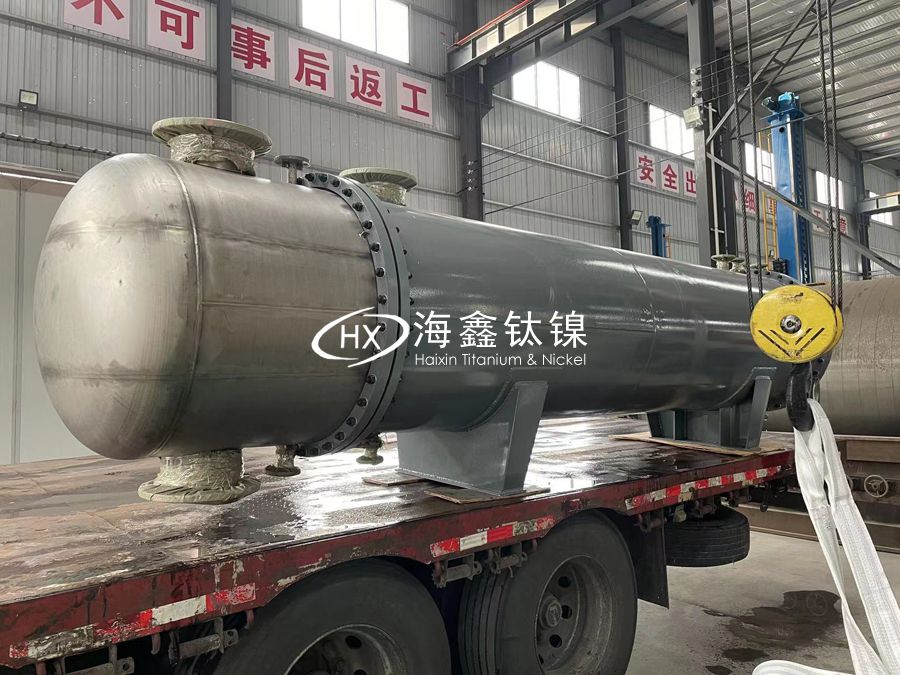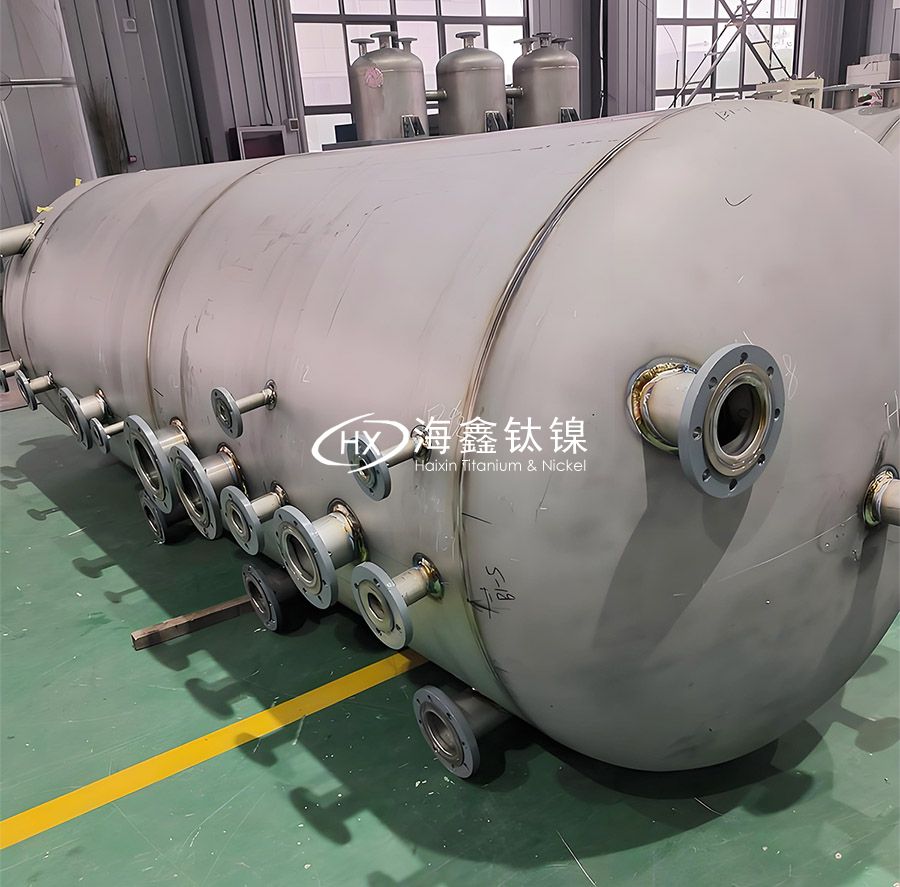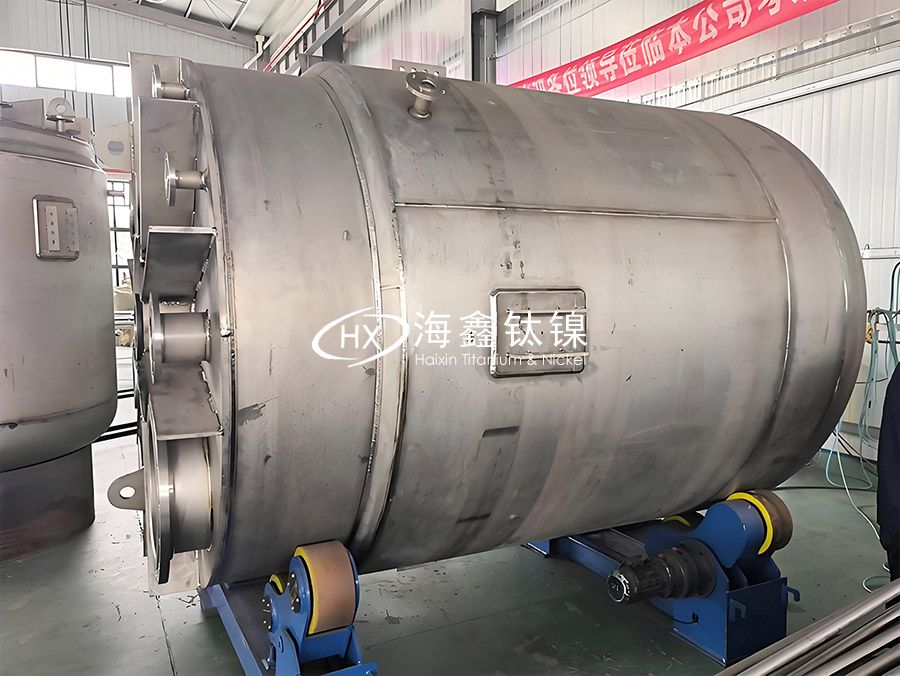Titanium heat exchangers, known for their corrosion resistance, lightweight design, high thermal conductivity, and long lifespan, are widely used in industrial settings requiring resistance to corrosive media or high-purity environments. Below are their primary application fields and selection guidelines:
I. Main Application Fields
1.Marine Engineering and Seawater Treatment
Seawater Desalination: Used in preheating/cooling stages of Multi-Effect Distillation (MED) or Reverse Osmosis (RO) systems to resist Cl⁻ corrosion (chloride concentration >19,000 ppm).
Ships and Offshore Platforms: Serve as coolers for seawater cooling systems (e.g., engine cooling, ballast water), avoiding pitting in stainless steel.
Marine Chemical Processing: Heat exchange in brine concentration and saltwater wastewater treatment.
2.Chemical and Petrochemical Industries
Strong Acid Media: Heating/cooling of hydrochloric, sulfuric, and nitric acids (e.g., shell-and-tube titanium exchangers for sulfuric acid dilution).
Chlor-Alkali Industry: Preheating electrolytic brine and cooling chlorine gas (resistant to wet chlorine corrosion).
Organic Chloride Production: Condensers for EDC (ethylene dichloride) in PVC manufacturing, resisting chlorinated hydrocarbon corrosion.

3.Power and Energy
Nuclear Power: Seawater cooling systems in secondary circuits of nuclear plants, minimizing radioactive leakage risks.
Geothermal Power: Heat exchange with high-salinity, sulfide-containing geothermal fluids.
LNG Liquefaction: Seawater coolers in LNG pretreatment, suitable for low-temperature and corrosive environments.
4.Environmental Protection and Wastewater Treatment
Industrial Wastewater: Heat recovery and evaporation of acidic wastewater (e.g., electroplating, metallurgical waste acid).
Flue Gas Desulfurization (FGD): Heating/cooling gypsum slurry in wet FGD processes, resisting SO₂ and Cl⁻ corrosion.
Landfill Leachate Treatment: Evaporation heat exchange for high-salinity, high-organic leachate, preventing scaling and corrosion.
5.Pharmaceutical and Food Industries
Pharmaceuticals: Sterilization and cooling of high-purity media (e.g., injection water, acid/base solutions), meeting GMP contamination-free requirements.
Food Processing: Pasteurization of acidic foods (juices, vinegar), compliant with FDA food-contact safety standards.
Biotechnology: Temperature control of fermentation broths to avoid metal ion contamination.
6.New Energy and Electronic Materials
Lithium Battery Manufacturing: Cooling and temperature control of electrolytes (e.g., LiPF₆), resisting fluoride corrosion.
Polysilicon Production: Condensation and recovery of high-purity chlorosilane gases.
Hydrogen Fuel Cells: Thermal management of electrolyte solutions (e.g., concentrated sulfuric acid) for efficiency and safety.

7.Other Specialized Fields
Aerospace: Hydraulic oil cooling and fuel preheating systems, leveraging titanium’s lightweight and high-temperature resistance.
Medical Devices: Heat exchange modules in dialysis machines and oxygen generators, ensuring biocompatibility and cleanliness.
High-End Laboratories: Precise temperature control in ultra-pure chemical synthesis to avoid metal contamination.
II. Core Advantages of Titanium Heat Exchangers (vs. Other Materials)
| Parameter | Titanium Heat Exchanger | Stainless Steel/Copper Heat Exchanger |
| Cl⁻ Corrosion | Resists >20,000 ppm (no pitting) | 316L stainless steel resists <200 ppm (pitting-prone) |
| Acid Resistance | Resists HCl, dilute H₂SO₄ (<40% concentration) | Only resistant to HNO₃; severe corrosion in HCl |
| Lifespan | 15–25 years (marine environments) | 3–8 years (frequent replacement in seawater) |
| Maintenance Cost | Low (no anti-corrosion coatings needed) | High (regular acid cleaning, part replacement) |
| Thermal Conductivity | 17 W/(m·K) (TA2 grade) | Copper: 400 W/(m·K) but corrosion-prone |
III. Selection Considerations
1.Media Compatibility
Prioritize titanium for Cl⁻, F⁻, or pH <2 acidic media. Switch to tantalum or Hastelloy for hydrofluoric acid (HF).
2.Temperature/Pressure
Temperature Range: -269°C to 300°C (TA2); use Ti-Pd alloy (TA9) for >300°C.
Pressure: Design pressure ≤6.4 MPa; use forged titanium for high-pressure applications.
3.Structural Design
Shell-and-Tube: Ideal for high-flow, high-pressure scenarios (e.g., seawater cooling).
Plate-Type: Compact and efficient for food/pharmaceutical industries (detachable for cleaning).
4.Cost Optimization
Use titanium-clad steel for non-contact zones, reducing material costs by 30–50%.

Titanium heat exchangers are the preferred solution for corrosive media heat exchange, especially in marine, chemical, and new energy sectors. While initial costs are high, their long lifespan and low maintenance ensure superior lifecycle economics. Key selection factors include media corrosivity, temperature/pressure parameters, and industry certifications (e.g., ASME, PED).